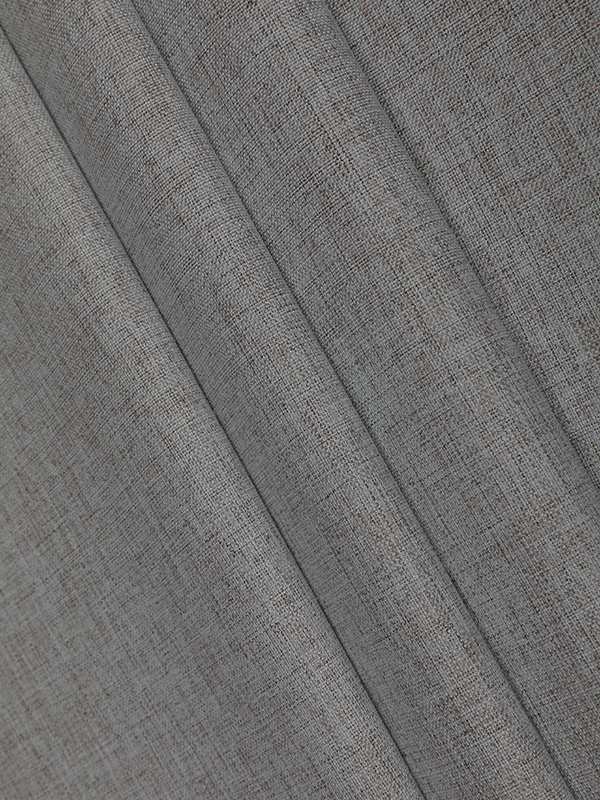Fine linen curtain fabrics have the following characteristics in terms of gloss, color and environmental friendliness:
Fine linen curtain fabrics have a low gloss and present a soft, natural sheen. Compared with fabrics such as silk and wool, the gloss of linen is not obvious, but this natural gloss is one of its unique charms, giving people a low-key and elegant feeling.
The surface of linen fibers has a slight smoothness, which makes the curtains show a gentle reflective effect in the sun, but not as shiny as synthetic fiber curtains. This reflective effect helps to create a warm and peaceful indoor atmosphere.
Due to the complex fiber surface structure of linen fabrics, the gloss of the curtains will change according to different light angles, showing a soft luster under sunlight during the day, and appearing more plain and natural in dim environments.

The natural color of linen is usually neutral tones such as light gray, beige, and brown, giving people a natural and gentle feeling. These tones are very suitable for matching with natural or minimalist interior decoration.
Although the natural color of linen fabric is relatively low-key, it has good dyeing ability. Fine linen curtains can be dyed to present a variety of rich colors, from soft light colors to deep saturated colors. The dyed linen fabric is soft and not dazzling, which makes it more tasteful.
Compared with other natural fibers, fine linen has a relatively long-lasting dyeing effect and strong resistance to fading. However, due to its natural fiber characteristics, it may still fade to a certain extent when exposed to strong sunlight for a long time.
Flax is a natural plant fiber derived from the flax plant. It does not require a lot of fertilizers or pesticides during its growth process, so it is more environmentally friendly than other fiber materials during production. It has a short production cycle, consumes less resources, and has a small impact on the environment.
Linen fabric has good biodegradability and can be naturally degraded after its service life, without causing long-term pollution to the environment. This makes fine linen curtain fabric an ideal choice for environmentalists.
Flax plants absorb carbon dioxide during their growth, so when producing linen fabrics, the overall carbon footprint is relatively low, which helps to reduce the impact of global climate change.
Fine linen curtain fabrics usually do not contain harmful chemicals or additives that are harmful to the human body, so they are suitable for families with children or people with allergies. At the same time, the natural fibers of linen will not release toxic substances in long-term use, which meets the green environmental protection standards.
Fine linen curtain fabrics are outstanding in terms of gloss, color and environmental protection. Its natural gloss and soft colors can add a warm and natural atmosphere to the room, while its environmentally friendly and degradable characteristics make it a more sustainable choice.

 中文简体
中文简体











